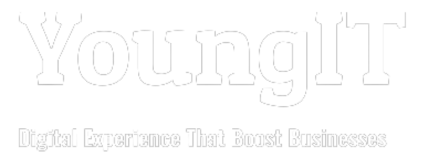Digital Transformation
Digital Transformation refers to the process of leveraging digital technologies to fundamentally change how businesses operate, deliver value to customers, and achieve their strategic goals. It involves using digital tools, technologies, and strategies to improve business processes, enhance customer experiences, and drive innovation.
Digital Transformation encompasses a wide range of activities, including:
- Digitizing Operations: This involves replacing manual and analog processes with digital systems and tools. It includes automating workflows, digitizing paper-based documents, and utilizing technologies like cloud computing, IoT (Internet of Things), and data analytics to streamline operations and improve efficiency.
- Enhancing Customer Experience: Digital Transformation focuses on delivering exceptional customer experiences across multiple touchpoints and channels. It involves leveraging digital technologies to understand customer behavior, preferences, and needs, and providing personalized, relevant, and seamless experiences throughout the customer journey.
- Data-Driven Decision Making: Digital Transformation relies on leveraging data as a strategic asset. It involves collecting, analyzing, and deriving insights from data to drive informed decision-making, identify trends, optimize processes, and uncover new business opportunities. It may involve implementing data analytics, AI (Artificial Intelligence), and machine learning technologies.
- Innovation and Agility: Digital Transformation encourages a culture of innovation and agility within organizations. It involves adopting agile methodologies, promoting collaboration and experimentation, and fostering a mindset of continuous improvement. It also includes exploring emerging technologies, such as blockchain, virtual reality, and augmented reality, to create new products, services, and business models.
- Business Model Disruption: Digital Transformation can lead to the disruption of traditional business models. It enables organizations to reimagine their value proposition, explore new revenue streams, and enter new markets. It may involve creating digital products or services, leveraging platform-based business models, or partnering with digital disruptors.
- Organizational Change and Talent Development: Digital Transformation requires organizations to adapt their structures, processes, and capabilities to embrace digital technologies. It involves developing digital skills within the workforce, fostering a culture of learning and innovation, and empowering employees to embrace digital tools and processes.
Digital Transformation is not just a one-time project but an ongoing journey. It requires strategic vision, leadership commitment, and a holistic approach that encompasses technology, processes, people, and customer-centricity. Organizations that successfully undergo Digital Transformation can gain a competitive advantage, improve operational efficiency, drive growth, and deliver superior customer experiences in the digital age.
Benefits of digital transformation
- Increase customer satisfaction
- Drives data-based insights
- Enables software monetization
- Enables high-quality user experience
- Encourages collaboration & increases communication
- Limits human error
- Encourages an environment of employee excellence
- Increases operational efficiency.
How we can help in Digital Transformation
At our IT services company, we recognize the importance of digital transformation, and we help our clients achieve their digital transformation goals through our expertise and services. Our team of IT professionals has extensive experience in digital transformation, and we work with our clients to develop customized digital transformation strategies tailored to their unique business needs.
One way we help our clients in digital transformation is through cloud migration. We help companies move their data and applications to the cloud, enabling them to take advantage of the scalability and flexibility of cloud computing. This not only improves operational efficiency but also reduces IT costs and provides greater data security.
We also help our clients with data analytics and artificial intelligence (AI) solutions. With the increasing amount of data being generated by businesses, it’s essential to have the tools and expertise to analyze and extract insights from this data. Our data analytics and AI solutions enable our clients to make informed decisions based on data-driven insights.
In addition, as digital transformation opens up new chances for cyber-attacks, we aid our clients with cybersecurity solutions. We assist our clients in implementing strong cybersecurity procedures that ensure their data is secure and protected from cyber threats.
Digital Transformation Read More »



